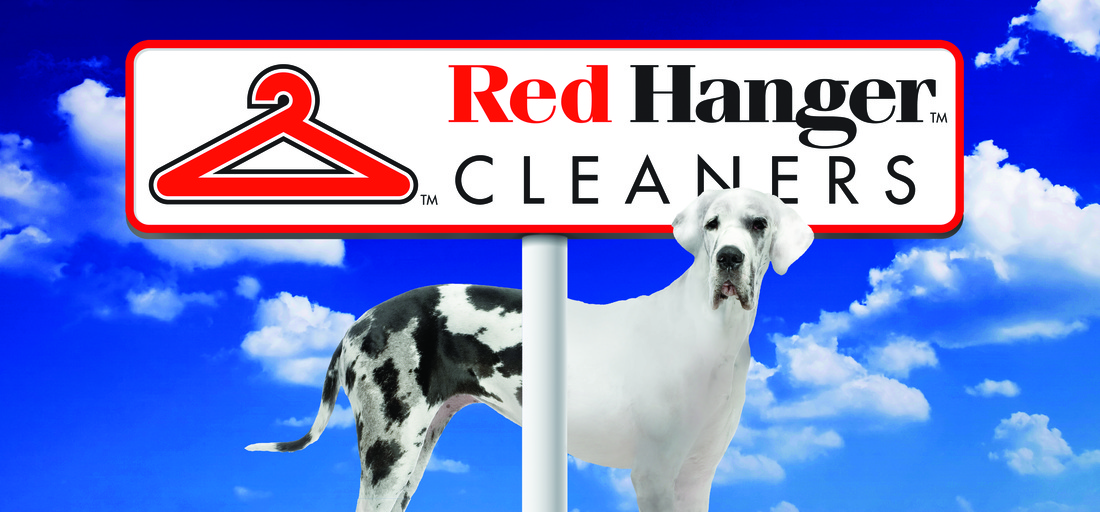—Steve Cuno
|
The trick to a good billboard ... ... is to craft it so consumers can take in the message with a glance. Here is our latest effort for Red Hanger Cleaners. Thanks to a great client, we were able to cook up an effective concept that also happens to be fun.
—Steve Cuno
2 Comments
Another Lesson From The Ford
Mockups We Love to Hate You know the recent ad mockups for Ford with illustrations of women tied up in a van driven by Silvio Berlusconi which led JWT to fire the employees behind it? I find it interesting—even hypocritical—that so many media cry foul while eagerly rushing to reproduce the images. Which is why I’m neither reproducing nor linking to them here. Since the ads didn’t run and reportedly were not seen by senior execs on the agency or client side, we are left to assume the whole thing was a gag at the hands of lower-level folks who should have known better. But was it? We’re talking three, well-crafted illustrations. They would have taken time and work. Not typically the sort of thing one tosses out merely to be funny. Much has been written in the way of outrage as to what the folks behind the mockups deemed funny. Rather than try to out-outrage them, I’m going to address another lesson: that one must take care with gags. Gags have a habit of getting out. Especially in an internet age. Twice, I learned this the hard way—fortunately, before the internet age. The first took place when I was a hospital chain’s advertising manager. I had spotted an edgy fertility clinic ad in a trade magazine. Knowing that my ultra-conservative employer would be aghast, I had our ad agency mock it up with our logo. I showed it to my boss who laughed out loud and showed it to his boss. His boss laughed out loud and showed it to his boss, the CEO. Drawing a heavy sigh, the CEO approved it. Suddenly I was in the position of having to explain to him that (a) he had been duped (he wasn’t fond of being duped), (b) I had plenty to do with my time, and (c) our organization didn’t even have an infertility clinic. The second took place years later after I’d opened the RESPONSE Agency. A college professor advised one of my clients to run ads attacking the competition. In general this is a stupid idea, and in this case it was mega stupid. That’s the problem with consultants loaded with theory in place of practical experience, which the professor personified. Over my objections, the client told us to propose some attack ads. We gave it a good effort, but for fun threw in a mockup with an odious sexual connotation. It was for our direct contact’s eyes only. As we expected, he found it funny. Not as we we expected, he forgot to remove it before sending the stack of ads up the ladder. Back came a note from his indignant boss: “Is the agency aware that this headline has an odious sexual connotation?” I am happy to say that I have learned my lesson. Well, sort of. Almost. Now when we mock up a gag for the eyes of one person only, we don’t leave it behind. And we sure as heck don’t email or post it. When the laughs are over, we take it back and shred it. —Steve Cuno It isn’t the sizzle that sells, either.
If you hope to sound smart about advertising, avoid saying “it’s not the steak that sells, it’s the sizzle.” Aside from its being a tired cliché, it happens to be meaningless at best, untrue at worst. Permit me to wax literal. On a hot grill, a low quality steak will sizzle just like a high quality one. So will a wet sponge. So unless you don’t get out much, the sound of a steak sizzling at, say, Denny’s won’t do the same thing for you as one at, say, Morton’s. I hope you wouldn’t pay for a steak at Denny’s what you’d pay for one at Morton’s based purely on noise coming from the grill. Conclusion: It ain’t the sizzle you’re buying, ergo, it ain’t the sizzle that sells. And now for those who prefer to wax metaphorical. Sizzle is a term people use for that certain je ne sais quoi that makes them love an ad. I get that. Trouble is, one person’s sizzle is another person’s so what?; and presumed hot and presumed not-so-hot ads alike have been documented to sell and fail to sell. This makes hotness rather a useless standard for judging an ad’s selling potential. Some people reserve their pronunciation of hotness until after an ad has had its run. If they love the ad and it succeeded, they deem it as having sizzle, and hold it up as proof that sizzle sells. This is great only if you like circular arguments. So, what does sell? You might try relevance and see what happens. —Steve Cuno • • • Direct Mail in an Online World
From a Q&A interview with Inside Direct Mail Inside Direct Mail: In your opinion, what is the future of direct mail? Feel free to give me a rosy or gloomy forecast. And how much of it depends on economy? Will direct mail resume its former position when (and if!) the economy restabilizes, or is this channel forever altered? Steve Cuno: No one knows the future of direct mail, but two factors point to an opportunity. One is that, thanks to the internet, mailboxes today contain mostly advertising mail, most of which is inept. The other factor is that, unlike spam, direct mail cannot go into the trash without a recipient’s at least taking a look. For both reasons, our shop has found that well-targeted, well-executed direct mail rises to the top with greater power than ever. But note the qualifiers “well-targeted” and “well-executed.” Inept mail works no better than it ever did. Inside Direct Mail: Direct mail is much more intertwined with other channels today. What are your predictions for the role direct mail will play for most organizations in the multichannel mix? Steve Cuno: Sometimes direct mail is used as an auxiliary awareness medium—“part of the mix.” While that can be strategically valid, it’s important to remember that direct mail has power to do more than simply reinforce a campaign message. Inside Direct Mail: Do you think email and social media and mobile will fade over time . . . and direct mail make a comeback of sorts? Will prospects and customers return to favoring mail over email, for example? Or will trends of declining mail continue? Steve Cuno: Solid direct mail continues to prove its worth, so it should make a comeback. Whether it will remains to be seen. Inside Direct Mail: What about the roles of the website and pURLs with direct mail. Do websites and landing pages need to be better synced with direct mail campaigns than ever before? Steve Cuno: Of course we should sync direct mail with landing pages. They add a convenient response vehicle. Happily, it’s a trackable one. Inside Direct Mail: The common consensus is that the older the audience, the more direct mail-friendly they are. Thus, Seniors and Boomers are better direct mail prospects than Gen Y and iGen, for example. Do you agree or not? Steve Cuno: This shouldn't be an agree/disagree question. Let’s take a look at what the evidence shows. Then it becomes an accept/not-accept question. Inside Direct Mail: How is copy and color and design, on the outer as well as inside the effort, being used differently today? In the future? For example, more usage of both sides of envelope? For 4-color envelopes? Steve Cuno: It’s important to explore things like color, freemiums, both sides of the envelope, etc., etc. But sometimes I fear that these and other devices are used in place of strong copy. Given a strong list and compelling offer, copy is where selling takes place. Skilled use of an envelope back increases sales, not by looking cool for its own sake, but by luring more people into the copy. And that, of course, only works if the copy is powerful. The art of compelling copy must never take a back seat. Inside Direct Mail: With the economic downturn, the green discussion seems to be somewhat muted. Will Green mail become a player again, with more green messaging and seals, for example, be present on future efforts? Steve Cuno: Marketers should “go green” when doing so is a core value, that is, when they care about the environment for its own sake. They should not expect going green to be a general business-driver. Except, of course, when the target market happens to be ardently earth-friendly. Inside Direct Mail: If you had to name the 3 greatest copywriting/design tips, what works now and will in the future, what would they be? Steve Cuno: There are but two. The first is, thou shalt test. The second is like unto it: Thou shalt set aside thy personal preferences and roll out only that which succeedeth. |
Share this blog by clicking your favorite icons below:
Archives
September 2023
|


 RSS Feed
RSS Feed



